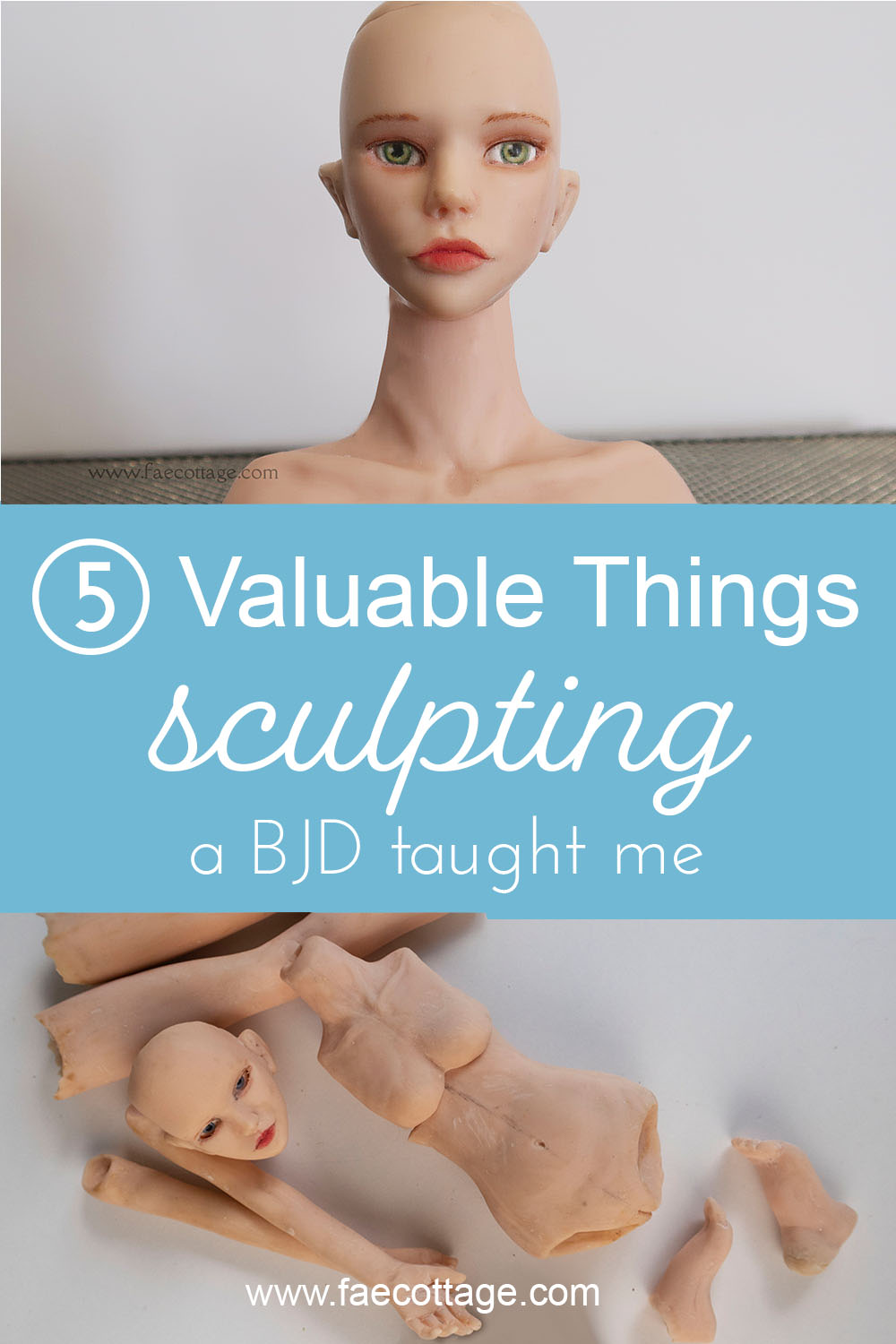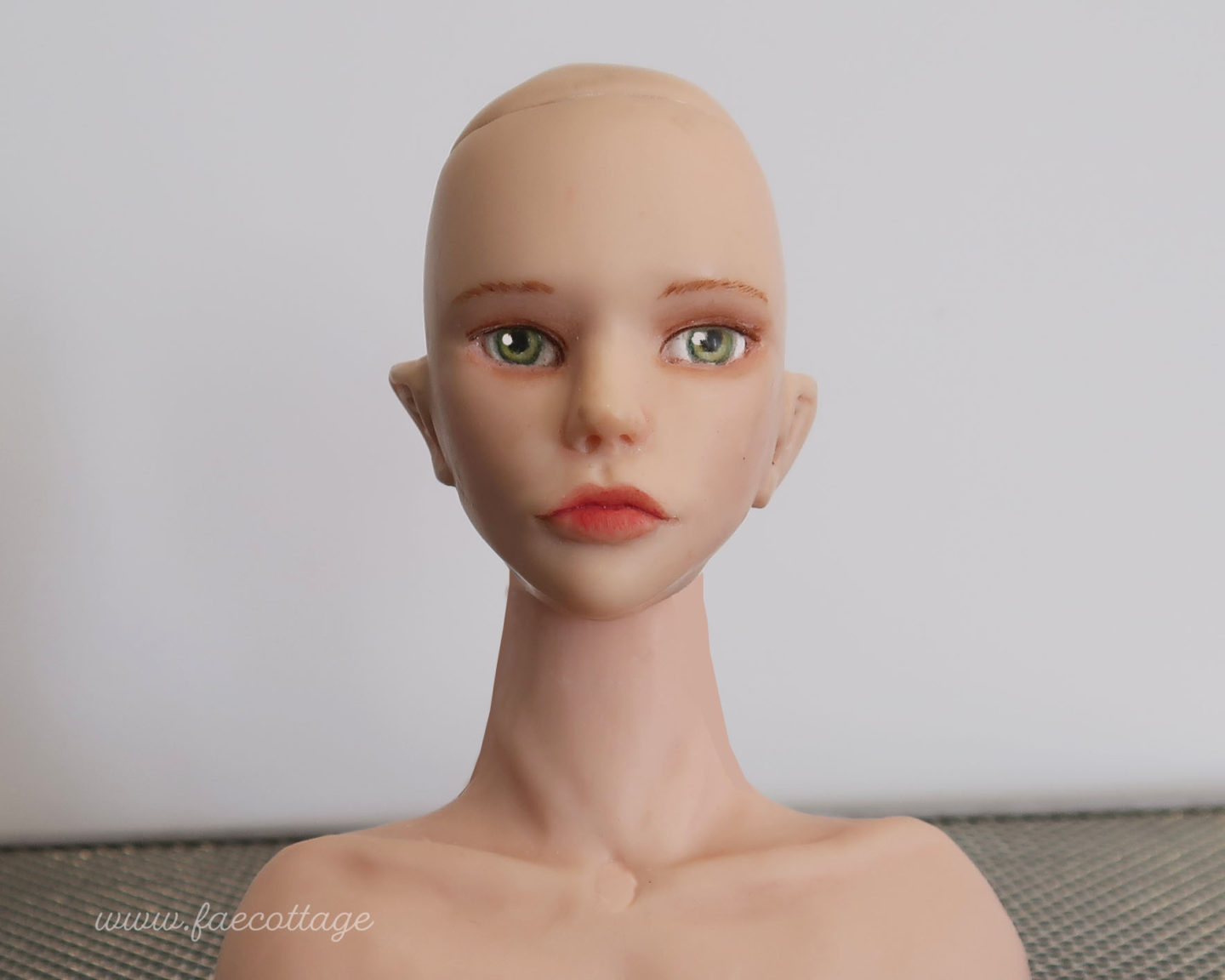
Back in 2007, when I first started learning how to sculpt a BJD, I had no idea when or if I’d ever cast my creations in resin. But my determination to uncover all the “hows” kept me going on the road to becoming a ball-jointed doll artist, and I’m almost there!
Here on my blog, I invite you to join me on my adventure through art, drawing and becoming a ball-jointed doll artist. I’ll be sharing with you what I learn as I go. I learned about the Ball-Jointed Doll Phenomenon around 2006 when I saw some BJDs on one of my favorite artist’s blog.
Soon after I bought my first ball-jointed doll, I found the Den of Angels doll-making forum. There, I discovered other artists in the process of making their own dolls. I learned how they crafted their BJD dolls from paper or polymer clay. Watching them make molds and cast their creations in resin gave me the inspiration that I could do it too.
I owe a debt of gratitude to DOA for having the artists section on their forum in the early days. Without that group, I might never have believed I could learn to sculpt a BJD or realize that casting them myself was possible. I thought all professional-quality dolls were created in factories using machines and assembly lines!
My journey hasn’t been a short one. First, I had to learn to sculpt a BJD well enough to create something worth casting. I remember asking my husband, “Honey, if I make a ball-jointed doll good enough to cast, will you cast it for me?” He said, “Of course I will!” I’m not sure he thought I’d stick with my dream of wanting to be a ball-jointed artist for so long, but I’m almost there.
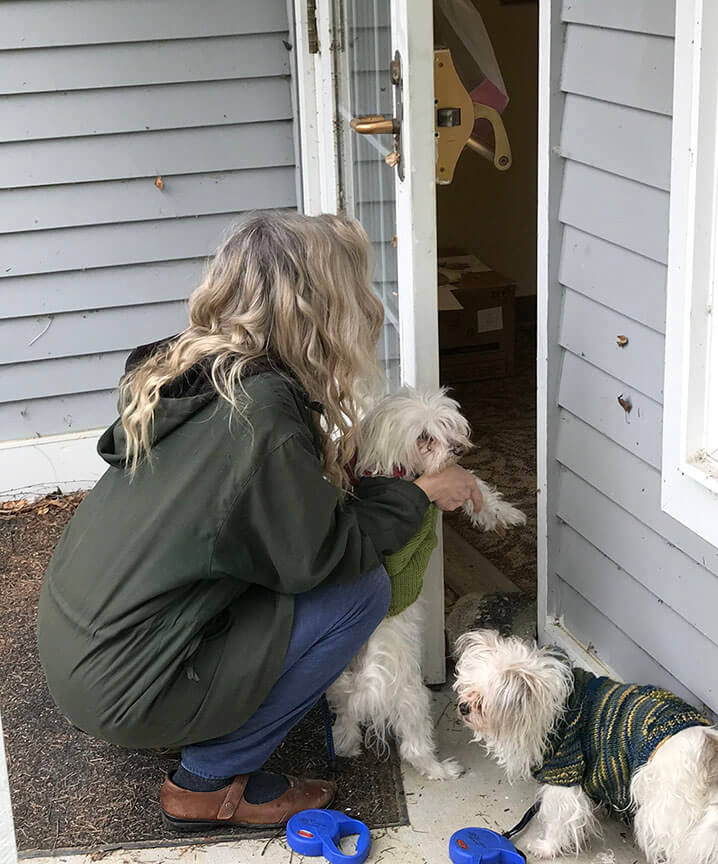
When Life Gets in the Way of Your Dreams, Don’t Give Up
A whole decade has elapsed since I started my journey to become a ball-jointed doll artist and learn the art of sculpting BJD dolls. Unfortunately, a few summers back, my mother suffered a fall, and upon returning home from the hospital, I assumed the role of her full-time caregiver. Consequently, my doll making was put on hold. Art should have been my outlet, but caring for my mom who was suffering from dementia left me too emotionally drained.
In January 2020, we moved my mother to a nursing home just before the pandemic struck. They limited our visits to the other side of a closed glass door for nearly a year. Occasionally a compassionate nurse opened the door a crack so that her dog, Barney, could slip through. Thankfully, by winter 2022, the nursing home permitted us to take her outside to the sheltered porch area for visits.
Sadly, my mother passed away last year. I have gratitude for the few months of more normal visits we shared. I’m only just getting back into my routine of creating artwork, drawing, and doll-making. I know my mom wanted me to continue, as she was my most ardent supporter.
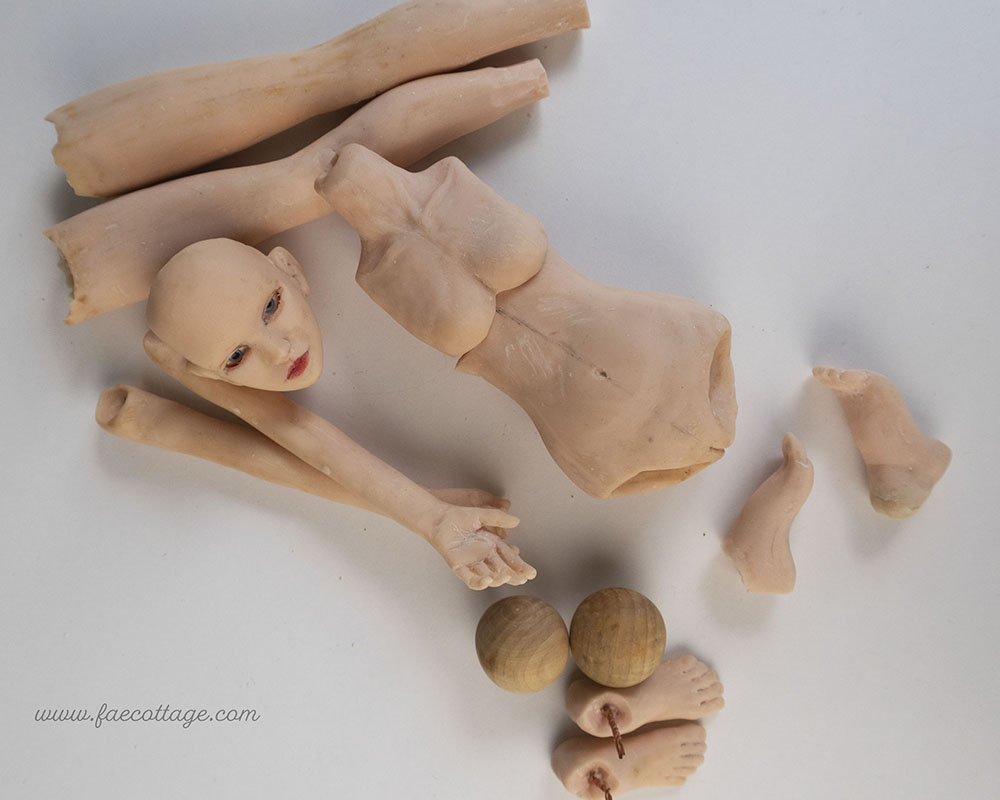
Balancing Skills: Becoming a Ball-Jointed Doll Artist
I had never heard of 3-D printing when I started learning to sculpt. Now, many artists use programs like Blender, Maya, or ZBrush to create their dolls.
I still sculpt my dolls entirely by hand because I love working with the clay; I love the feel of it as it softens in my hands and the slow, deliberate rhythm of the work. Seeing a doll slowly coming to life beneath my hands brings me joy.
However, I’m starting to learn Z-Brush, but it’s a complicated program. It will take me a while to learn to sculpt on the computer as well as I can sculpt with clay. But one thing I like about the program is that it tries to replicate the sculpting process.
Some people think sculpting with a 3-D program is like using AI, but it’s not. You still need good drawing skills and the ability to image your piece in 3 dimensions as you turn it and work from different angles.
In the meantime, I started making 1/4 scale pose-able dolls with cloth bodies. Each is unique, and I plan to cast some of their heads as part of a future BJD project.
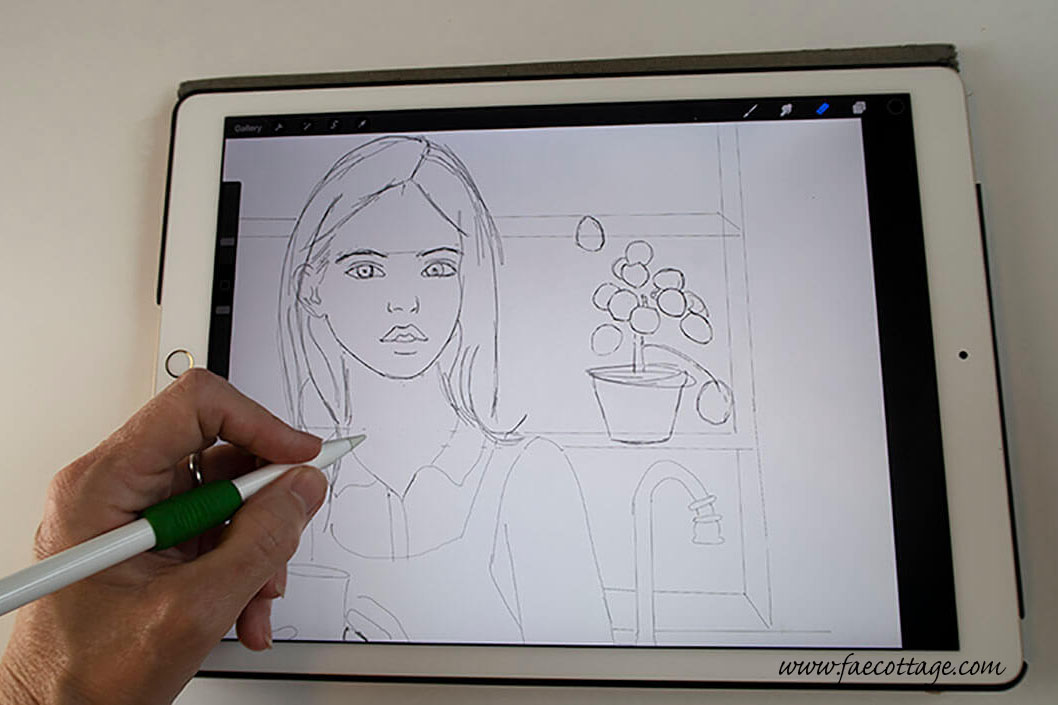
The Value of Learning to Draw First
Sculpting was much easier to learn for me because I already could draw realistically. Practicing daily drawing helps me notice little details when sculpting that are off. For example, when one of the eyes is higher than the other, or the mouth is too far below the nose. Drawing faces, lots and lots of faces, helps you create a visual memory in your mind about how exactly a face should look.
I continue to draw faces and figures daily. My mornings start with a cup of tea and some warm-up sketches, followed by drawing several faces, bodies or practice gesture drawing. A drawing routine makes mornings an enjoyable, stress-free part of my life.
Lessons from Learning to Sculpt a BJD
1.) It’s never too late to become an artist. No matter where you are in life, you can start learning a new skill.
2.) Making art is a great way to reduce stress. Stick with it and let the creative process soothe your mind.
3.). Art can be learned. Don’t be afraid to pursue your artistic dreams, even if you’re a complete beginner.
4.) Make art time a priority. Schedule time for your art and make it an essential part of your daily routine.
5.) Embrace the learning process. Understand that making mistakes is a natural part of learning any new skill. Don’t let them hold you back.
You can’t change the past or travel back in time. However, there’s no reason not to start learning a new skill right now, wherever you are in life. It is always possible to become an artist
Download my warm-up worksheets to inspire you to get started with daily drawing. They motivate me to draw every day! I’d love for you to try these out. They help to shift you into a less critical frame of mind for drawing. Embrace the fact that you’ll make mistakes, and don’t let them stop you.
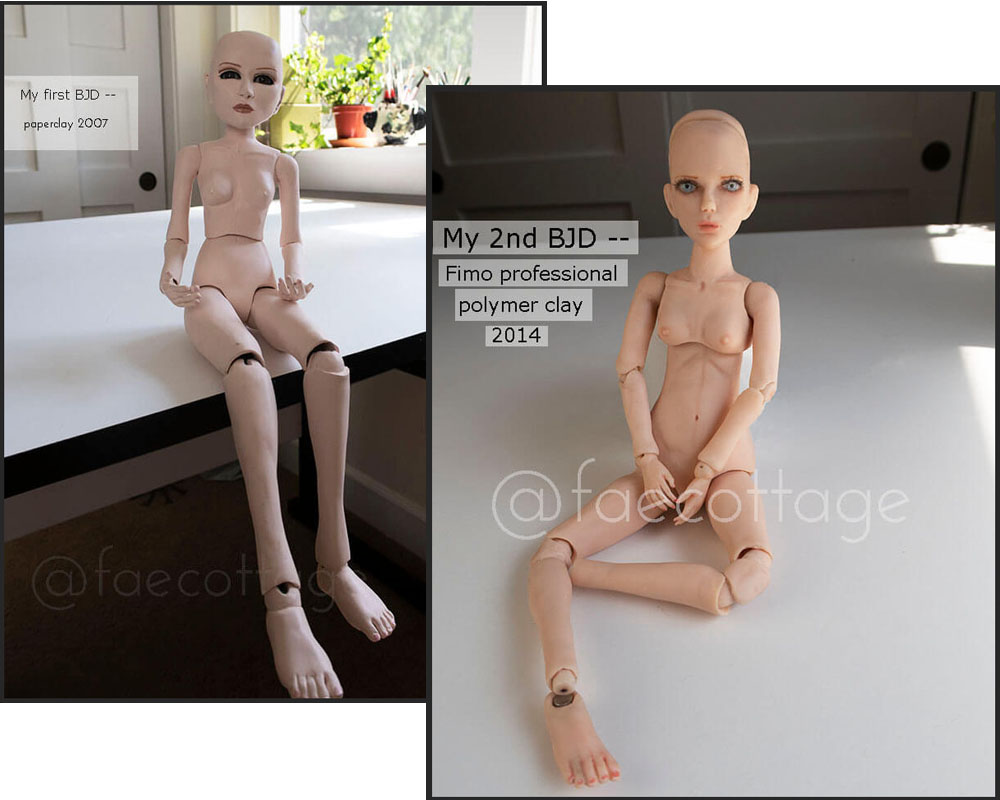
The Most Important Lesson: Finish What You Start
My father used to say to me, “Janna, you quit everything you start.” Although many of the activities I quit were chosen by my parents. But that statement became ingrained and affected me even as an adult. To change that belief, say to myself a reminder. “I try many things to see whether I am truly interested in them. Then, if I don’t like it, I’m free to quit.”
But this time, I’m determined to prove my dad wrong by casting one of my dolls in resin and truly becoming a ball-jointed doll artist. Even if our progress is slower than we’d like or others who started later pass us by, if we refuse to give up, we will never fail.
